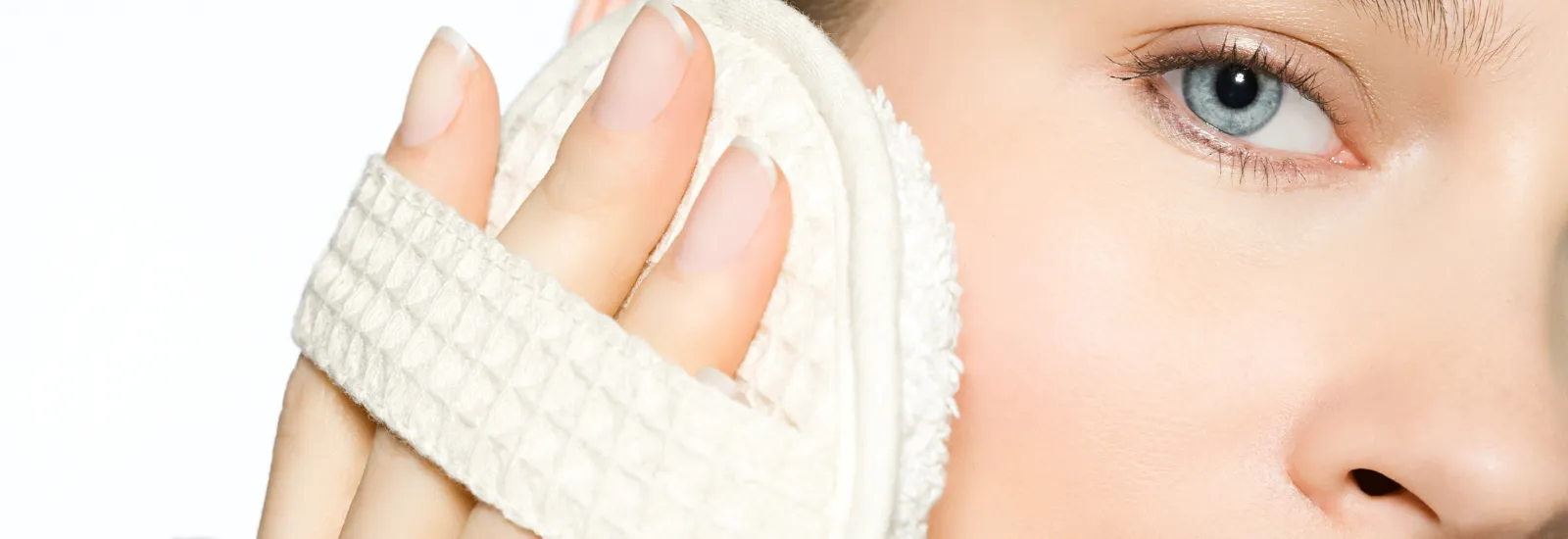
Exfoliation 101: How to Safely Exfoliate Skin
About every month or so, your skin goes through a natural cell turnover. This means the outer layer of your skin sheds off dead skin cells to make room for new cells. However, sometimes the layers of dead skin cells don't fall off completely, which can make your complexion look rough and dull. It can also increase the appearance of pores and lead to dry skin. One solution is to exfoliate skin for an improved look and feel.
Why exfoliate skin
Exfoliating your skin means that you are manually removing the dead skin cells from the outer layer of your skin. When done properly, exfoliation can offer several benefits, including:
- Better absorption of moisturizers
- Fading of age spots
- Reduced appearance of dark spots, pore size, and acne scars
- Reduced visibility of fine lines and wrinkles
- Unclogged pores
Exfoliation may not get rid of your dark spots or acne scars completely, but with regular practice, it can encourage cell turnover to reduce their appearance. Exfoliation can also help increase collagen production over time. Collagen is a protein in the skin that helps keep your skin supple and strong.
Know your skin type
How often you should exfoliate skin depends on your skin type, skin condition and the exfoliant you use. Instead of focusing on how many times per week to exfoliate, assess your skin for dullness or flakiness and exfoliate only when your skin needs it. Be careful not to over-exfoliate, which can lead to irritated and damaged skin. Here are some of the most common skin types:
- Combination skin. Combination skin has dry and oily patches. The T-zone (the forehead, nose, and chin) is typically oily because there are more oil glands in this area, and the rest of the skin is often dryer, or rough and dull.
- Dry skin. People with dry skin typically notice a rougher texture that might flake, peel, or crack, especially during the colder winter months. If you have dry skin, exfoliating can dry your skin out even more. Using a washcloth and very mild exfoliator are probably best, and not too often.
- Normal skin. This skin is typically well balanced — not dry or too oily — and usually has small pores and an even skin tone.
- Oily or acne-prone skin. People with oily or acne-prone skin might notice that their face is often shiny or greasy and their pores might be large or more visible. The oil glands underneath the skin produce more oil, which can cause pores to back up and lead to acne. You might choose a stronger exfoliant but be careful if you have dark spots after breakouts or have dark skin tone. Strong or aggressive exfoliation can make spots darker.
- Sensitive skin. If your skin gets easily irritated, you might have sensitive skin. People with sensitive skin should be very careful to avoid burns or rashes caused by exfoliation.
If your skin gets irritated or sensitized after any exfoliation, stop using that product and make an appointment with your dermatologist.
How to exfoliate
There are two different types of exfoliation: physical and chemical.
Physical exfoliation requires manual scrubbing. Some physical exfoliating products contain small beads, tiny sugar or salt grains, or powders. You can also use a scrubbing mitt, body brush, wash cloth, or loofah. To use a physical exfoliator, apply the product and scrub or rub lightly — don't be too rough or you might irritate your skin. Wash the exfoliant off with warm (not hot!) water and follow up with a moisturizer.
Chemical exfoliation involves a chemical peel and often contains alpha hydroxy acid (AHA) and beta hydroxy acid (BHA), agents that gently break down dead skin cells. AHA ingredients are usually labeled as glycolic, citric, or lactic acid, and the BHA most used is salicylic acid. AHA and BHA peels are used to treat different skin conditions.
AHAs are usually used for dark spots, dull skin, and fine lines and wrinkles. BHAs are used for acne or acne-prone skin. Both AHAs and BHAs can cause sun sensitivity, so always wear a broad-spectrum sunscreen when outdoors.

